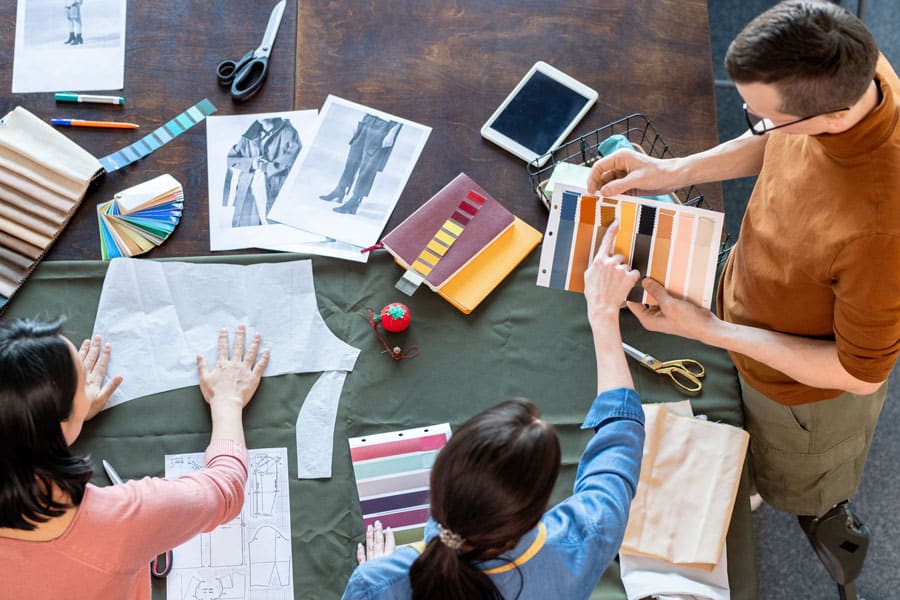 THE UNIFORM CHRONICLES
THE UNIFORM CHRONICLES
NAUMD is pleased to present The Uniform Chronicles, a new column written by Leslie Watt McArdle, industry veteran and senior manager of merchandise and product design.
In the world of uniform design, the designer’s role is pivotal. Immersing oneself in the job functions and daily routines of the employees for whom they are designing is crucial to creating the perfect uniform. The insights and experiences gained from collaborating with top conceptual designers in the industry provide invaluable lessons in understanding the needs of clients and their employees. This article explores the essential steps and key elements in conceptual uniform design, emphasizing the importance of safety, comfort, fabric knowledge, and client collaboration.
Immersion into the Client’s World
The first step in conceptual design is to immerse yourself in the client’s world. It is essential to understand what they wear and the type of clothing they need to perform their job better based on safety, comfort, and construction details. This involves:
- Safety Needs: Identifying safety requirements, such as reflective materials for visibility.
- Comfort Requirements: Consider aspects like fabric breathability, flexibility, and moisture-wicking properties.
- Construction Details: Focusing on practical details such as pocket placement and ease of movement.
Daily Routine Walkthrough
To design an effective uniform, a designer must walk in the employee’s shoes, observing their daily routines. For example:
- Trucking and Delivery: Understanding how often employees bend, get in and out of vehicles, and carry packages. Analyzing the type of equipment they carry and the protection needed in traffic settings.
- Field Work: Recognizing the need for weather-appropriate clothing that ensures comfort and protection in various conditions.
Key Elements of a Successful Uniform Designer
In-depth Research
A successful designer always researches the client thoroughly. This involves:
- Understanding the Client’s Business: Knowing what the client does and what they stand for and incorporating this into the design.
- Employee Demographics: Creating appealing and functional designs for a diverse employee population across different age groups.
Fabric Knowledge
Fabric choice is critical in uniform design. Designers must:
- Choose Appropriate Fabrics: Select fabrics with durability, cooling, performance, warmth, and temperature regulation.
- Consider Environmental Conditions: Ensure the fabric can withstand extreme weather conditions, providing comfort and protection against heat and cold stress.
- Focus on Sustainability: select sustainable fabric options that meet the client’s environmental goals.
Active Listening
Listening to the client and their employees is a hallmark of a great uniform designer. This includes:
- Understanding Job Functions: Pay attention to the job’s entails and employees’ specific concerns about their current uniforms.
- Incorporating Feedback: Using feedback to refine designs and address any issues.
Practical Considerations
Budget Management
Understanding the client’s budget is essential for creating viable design options. This involves:
- Good/Better/Best Concepts: Offer design options at different prices so clients can choose what works best for their budget.
- Cost-Efficiency: Ensuring designs are cost-effective without compromising on quality and functionality.
Branding and Aesthetics
Uniforms reflect the client’s brand. Designers must:
- Align with Brand Initiatives: Ensure the design aligns with the client’s branding goals and aesthetic preferences.
- Enhance Brand Identity: Use the uniform design to enhance and promote the client’s brand identity.
Designing uniforms in the uniform space presents unique challenges compared to fashion or retail. It requires a deep understanding of fabric specifications, job functions, and client needs. Designers can create safe, comfortable, and practical uniforms by immersing themselves in the client’s world, conducting thorough research, and actively listening to feedback. Just as actors study and become their role, designers must fully immerse themselves in the employee role to create the perfect uniform that enables them to perform their best at work.



















